Content
SHARE

YouTube has become an essential platform for content creators, businesses, and individuals looking to showcase their talents, products, or services to a wider audience.
With millions of videos being uploaded daily, it’s crucial to optimise your YouTube videos for search engine optimisation (SEO) to ensure your content gets discovered and stands out from the crowd.
In this comprehensive guide, we’ll take you through the steps to improve the visibility of your YouTube videos and maximise your reach through effective SEO strategies.
 Understanding The Importance of SEO For YouTube Videos
Understanding The Importance of SEO For YouTube Videos
Before diving into the nitty-gritty of YouTube SEO, it’s essential to grasp why it matters. SEO, or Search Engine Optimisation, is pivotal in ensuring your videos appear in search results when users enter relevant keywords.
FREE DOWNLOAD
SEO Do’s and Don’ts: A Comprehensive Guide
Master the art of SEO and boost your online presence. Learn the ropes of SEO success and pitfalls to avoid that has been kept secret by SEO experts worldwide with our guide .

It helps you gain organic traffic and drive engagement. By optimising your videos for SEO, you increase the chances of getting more views, subscribers, and, ultimately, achieving your goals on YouTube.
But why is SEO so important for YouTube videos? Well, let’s explore further.
Imagine this scenario: you’ve spent hours crafting a high-quality video, pouring your heart and soul into it. You upload it to YouTube, hoping that it will reach a wide audience and make an impact. However, with proper SEO, your video may stay aware of the vast sea of content on the platform.
That’s where SEO comes in. It acts as a guiding light, helping your videos shine amidst the competition. By optimising your videos with relevant keywords, tags, and descriptions, you increase their visibility and make them more discoverable to users.
 The Role of SEO In Video Visibility
The Role of SEO In Video Visibility
SEO plays a vital role in improving the visibility of your YouTube videos. When you optimise your videos for SEO, you increase the likelihood of them being ranked higher in YouTube search results and even Google’s search engine.
Think about it: when you search for something on YouTube, do you scroll through countless pages to find what you’re looking for? Probably not. Most users click on the top results that appear on the first page. So, if your video is optimised for SEO and ranks high in the search results, it’s more likely to attract clicks and views.
But it’s not just about attracting views; it’s about attracting the right views. Targeting specific keywords and optimising your videos accordingly can attract an audience genuinely interested in your content. This targeted approach can lead to higher engagement, more subscribers, and, ultimately, the growth of your YouTube channel.
How YouTube’s Algorithm Works
Now that we understand the importance of SEO for YouTube videos let’s delve into how YouTube’s algorithm works.
YouTube’s algorithm is a complex system that determines which videos are displayed to users based on various factors. These factors include keywords, engagement metrics, relevance, and video quality.
When a user enters a search query on YouTube, the algorithm analyses millions of videos to find the most relevant ones. It considers the video’s title, description, tags, and viewer engagement. By strategically incorporating SEO elements into these areas, you can enhance your video’s visibility and increase its chances of getting recommended to users.
But it’s not just about SEO. YouTube’s algorithm also considers viewer engagement as a crucial factor. If your video receives a high number of likes, comments, and shares, it signals to the algorithm that your content is valuable and worth recommending to others.
Therefore, creating compelling and engaging videos that resonate with your target audience is essential. Combining SEO optimisation with high-quality content can maximise your video’s chances of success on YouTube.
 Starting With the Basics: Keyword Research for Video SEO
Starting With the Basics: Keyword Research for Video SEO
Keyword research is the foundation of any successful SEO strategy, and the same goes for optimising your YouTube videos. By identifying the right keywords, you can align your content with what users are searching for, increasing the chances of your video appearing in search results.
Regarding keyword research, it’s essential to understand the intent behind the search. Are users looking for information, entertainment, or a specific product? Knowing this lets you tailor your video content to meet their needs and provide value.
One effective tool for keyword research is the Google Keyword Planner. This tool lets you explore keywords and see their search volume and competition level. It also provides suggestions for related keywords, giving you a broader range of options.
Another helpful tool is YouTube Autocomplete. As you start typing in the search bar on YouTube, it automatically suggests popular search queries. This can give you insights into what people are searching for and help you identify relevant keywords for your video.
TubeBuddy is another popular tool that can assist you in your keyword research. It provides detailed analytics on keywords, including search volume, competition, and trends. It also offers suggestions for tags and keywords based on your video content, helping you optimise your videos for maximum visibility.
Incorporating Keywords into Your Video Content
Once you’ve identified the keywords that align with your video content, it’s crucial to incorporate them into your videos strategically. Start by including your target keyword in the video’s title, which is significant in YouTube’s algorithm. However, ensure your title remains compelling and captures the viewer’s attention.
In addition to the title, you can include keywords in your video’s tags. Tags help YouTube understand the content of your video and can improve its visibility in search results. Be sure to choose tags that accurately describe your video and are relevant to your target keywords.
Furthermore, optimising your video description is essential for SEO. Provide a concise and informative summary of your video, including relevant keywords naturally. This helps YouTube understand your video’s content and gives viewers a preview of what to expect.
Remember, keyword optimisation is not just about stuffing your video with keywords. It’s about providing valuable and engaging content that meets the needs of your target audience.
By understanding their search intent and incorporating keywords strategically, you can increase the visibility and reach of your YouTube videos.
 Optimising Your Video Title and Description
Optimising Your Video Title and Description
Your video title and description are prime real estate for SEO optimisation. Crafting compelling, keyword-rich titles is essential to grab the viewer’s attention and boost your video’s visibility in search results.
When optimising your video title, there are a few key factors to consider. Firstly, incorporating your main keyword naturally into the title is crucial.
This helps search engines understand what your video is about and improves the chances of it appearing in relevant search queries. However, it’s essential to strike a balance and not overstuff your title with keywords, as this can come across as spammy and may turn viewers away.
But it’s not just about keywords. A captivating video title attracts viewers and encourages them to click on your video. Consider what would make someone want to watch your video and try incorporating that into your title.
Use emotional triggers or pose intriguing questions to pique curiosity. For example, instead of a generic title like “How to Bake a Cake,” you could try something like “Unleash Your Inner Baker: Master the Art of Cake Making.”
Crafting Compelling, Keyword-Rich Titles
Now that we’ve covered the importance of incorporating keywords and captivating your title, let’s dive deeper into crafting compelling video titles. One effective technique is using powerful words that evoke strong emotions in your audience.
Words like “unleash,” “master,” or “ultimate” can create a sense of excitement and urgency, making viewers more likely to click on your video.
Another strategy is to leverage the curiosity gap. This involves creating a title that hints at valuable information or secrets viewers can only uncover by watching your video.
For instance, a title like “The Surprising Truth About Weight Loss” can intrigue viewers and make them curious to learn more.
Writing SEO-friendly Video Descriptions
Optimising your video descriptions further enhances your SEO efforts. While the title grabs attention, the description provides more context and information about your video. It’s an opportunity to engage viewers and entice them to watch.
It’s essential to be detailed and informative when writing your video description. Clearly explain your video and what viewers can expect to learn or gain from watching it. This helps search engines understand your content better and sets the right expectations for your audience.
In addition to being descriptive, including relevant keywords in your video description is crucial. This helps search engines identify the topics covered in your video and improves its chances of appearing in relevant search results.
However, avoid keyword stuffing and focus on using keywords naturally and in context.
But don’t stop there! Consider adding timestamps to your video description to provide even more value to your audience. This allows viewers to easily navigate to specific sections of your video, enhancing their viewing experience. You can also include links to related content or resources that viewers might find helpful.
Lastly, remember to include a call-to-action in your video description. Whether it’s encouraging viewers to subscribe to your channel, visit your website, or engage with your content in some other way, a clear and compelling call-to-action can help drive further engagement and conversions.
 The Power of Tags and Categories in YouTube SEO
The Power of Tags and Categories in YouTube SEO
Tags and categories are often overlooked in YouTube SEO but can significantly impact your video’s discoverability and ranking.
When optimising your YouTube videos for search engines, tags and categories play a crucial role. These elements provide additional context to YouTube’s algorithm, helping it understand the content and relevance of your videos.
By utilising tags and categories effectively, you can increase your chances of appearing in related video suggestions and reaching a wider audience.
Using Tags Effectively for Video SEO
Tags are like keywords that describe the content of your video.
They act as a guide for YouTube’s algorithm, helping it categorise and recommend your video to users who might be interested in similar content. It’s essential to add relevant tags that accurately represent the essence of your video.
When selecting tags, including specific and broad terms is beneficial. Specific tags provide detailed information about the content, while broad tags help capture a wider audience.
For example, if you have a cooking tutorial video on making a delicious chocolate cake, you could include tags such as “chocolate cake recipe,” “baking tutorial,” and “dessert ideas.”
However, ensuring that the tags you use are popular and relevant is crucial. Adding irrelevant tags may lead to the algorithm marking your content as spam, negatively impacting your video’s visibility.
Therefore, it’s essential to choose tags that accurately reflect the content and are commonly searched by users.
Choosing The Right Category for Your Video
Categories provide a way to classify your video and help YouTube understand its content and context. Selecting the appropriate category improves the chances of your video being shown to the right audience.
When choosing a category, it’s essential to consider the nature of your video and the preferences of your target viewers.
Think about the primary focus of your content and select a category that aligns with it. For instance, if you have a travel vlog showcasing your adventures worldwide, you might choose the “Travel & Events” category.
Accurately categorising your video increases the likelihood of being recommended to users interested in that specific genre.
This can lead to more views, engagement, and better search engine optimisation for your channel.
 Leveraging YouTube’s Closed Captions and Transcripts For SEO
Leveraging YouTube’s Closed Captions and Transcripts For SEO
Closed captions and transcripts bring significant SEO advantages to your YouTube videos. Adding these elements can enhance accessibility, searchability, and user experience.
How Closed Captions Boost SEO
Adding closed captions to your videos not only makes them accessible to viewers with hearing impairments but also improves their searchability.
YouTube’s algorithm can crawl through closed captions, making it easier to index and understand the content of your videos.
Consequently, closed captions increase the chances of your videos appearing in search results for relevant keywords.
Creating SEO-friendly Transcripts
Transcripts are written versions of your video’s dialogue, providing an extra layer of SEO optimisation.
Using a transcript, YouTube can better understand your video’s content, context, and keywords. This leads to improved search visibility, increased watch time, and a better overall user experience.
By implementing these proven strategies to optimise your YouTube videos for SEO, you can increase your visibility, attract more viewers, and ultimately achieve your goals on this powerful platform.
Remember, consistently creating high-quality content paired with strategic SEO efforts is the key to building a successful YouTube channel that stands out.
Frequently Asked Questions About Optimising YouTube Videos for SEO
”Can
You can and should perform SEO for YouTube videos to enhance their visibility and reach. This involves using keywords effectively in your video titles, descriptions, and tags, utilising compelling thumbnails, and crafting engaging content to retain viewer attention and boost video rankings.
”How
Optimising video content for SEO entails focusing on elements like using relevant keywords in the video title, description, and tags, incorporating high-quality thumbnails, ensuring the video content is engaging and valuable to the audience, and encouraging viewer interaction through likes, shares, and comments. You might also create and submit video sitemaps to enhance the visibility of your video content to search engines.
”Does
Yes, adding subtitles or closed captions to your YouTube videos can aid SEO. Subtitles increase the accessibility of your videos and improve the viewer experience, a factor YouTube considers in rankings. Furthermore, because subtitles are crawlable by search engines, they provide additional textual content that can enhance your video’s keyword relevance.
”How
To increase your YouTube visibility:
- Focus on creating high-quality, engaging, and valuable content for your target audience.
- Leverage SEO by optimising video titles, descriptions, and tags with relevant keywords.
- Promote your videos across other social platforms, embed them on your website, and engage with your audience through comments.
- Encouraging likes, shares, and subscribers also signal to YouTube that your content is valuable, improving your visibility.
”What
The most searched topics on YouTube can vary widely and change frequently based on current events, trends, seasons, and user interests.
Entertainment-related content, how-to guides and tutorials, product reviews, and vlogs are popular. Utilising tools like Google Trends or YouTube’s analytics can provide insights into what is currently trending or commonly searched for on the platform.
To enhance your YouTube video SEO, consider employing a strategic approach to content creation, ensuring it aligns with your audience’s interests, and leveraging all available SEO tools and strategies to enhance visibility.

 Understanding The Importance of SEO For YouTube Videos
Understanding The Importance of SEO For YouTube Videos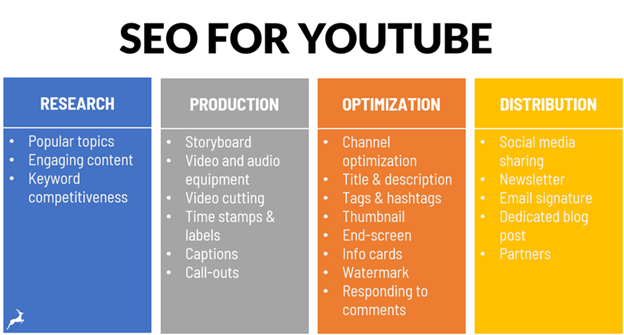 The Role of SEO In Video Visibility
The Role of SEO In Video Visibility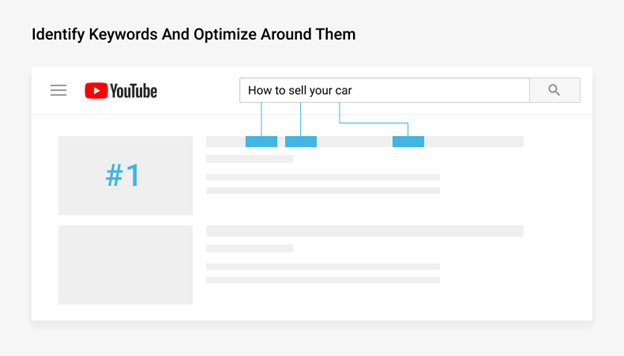 Starting With the Basics: Keyword Research for Video SEO
Starting With the Basics: Keyword Research for Video SEO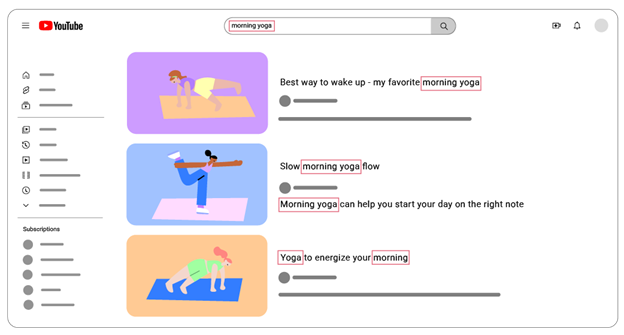 Optimising Your Video Title and Description
Optimising Your Video Title and Description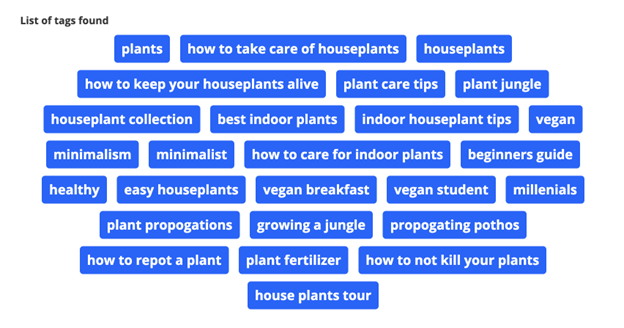 The Power of Tags and Categories in YouTube SEO
The Power of Tags and Categories in YouTube SEO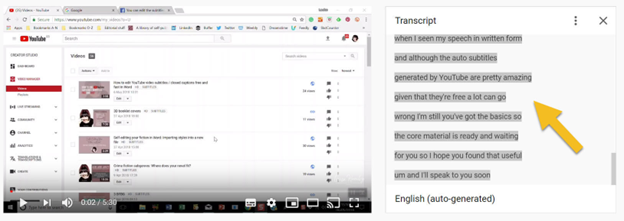 Leveraging YouTube’s Closed Captions and Transcripts For SEO
Leveraging YouTube’s Closed Captions and Transcripts For SEO










